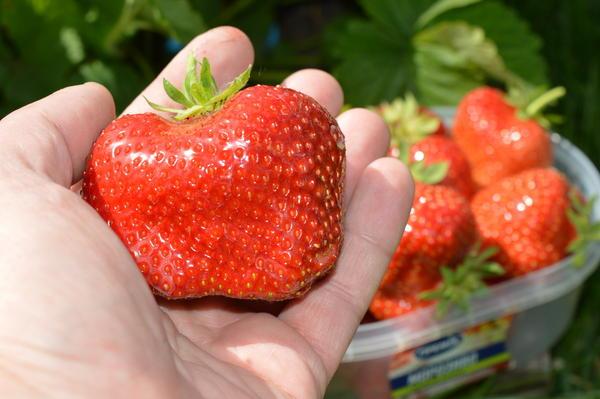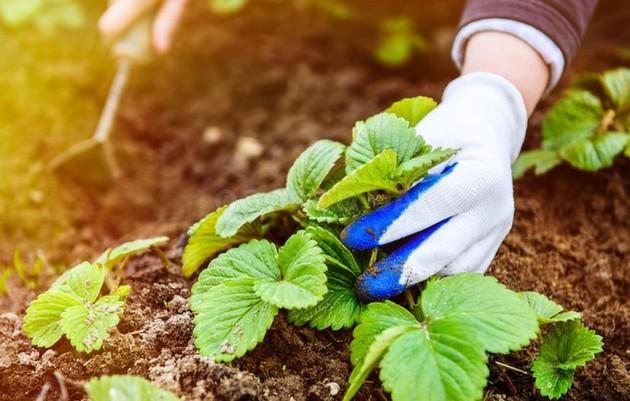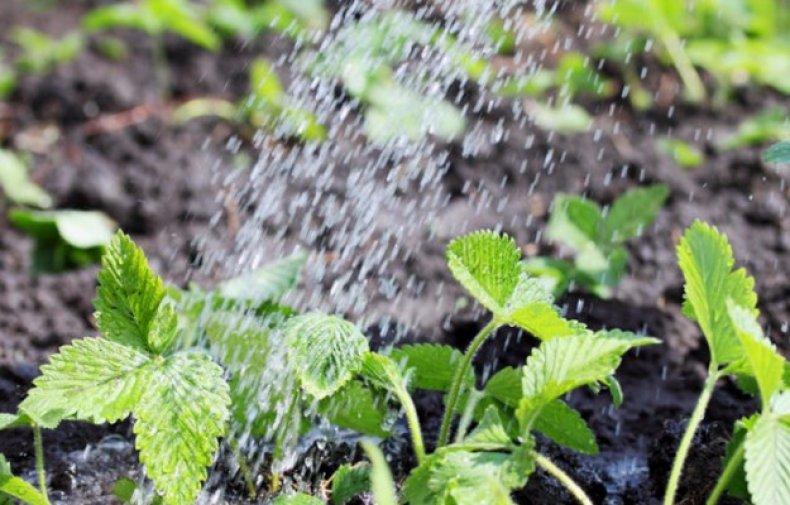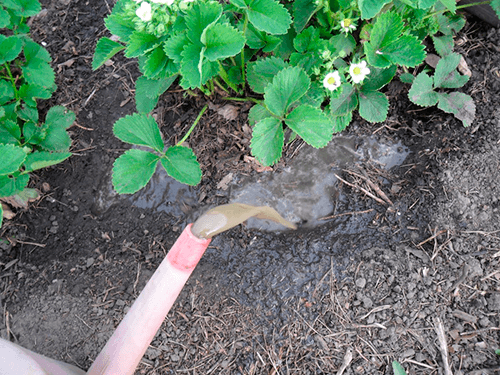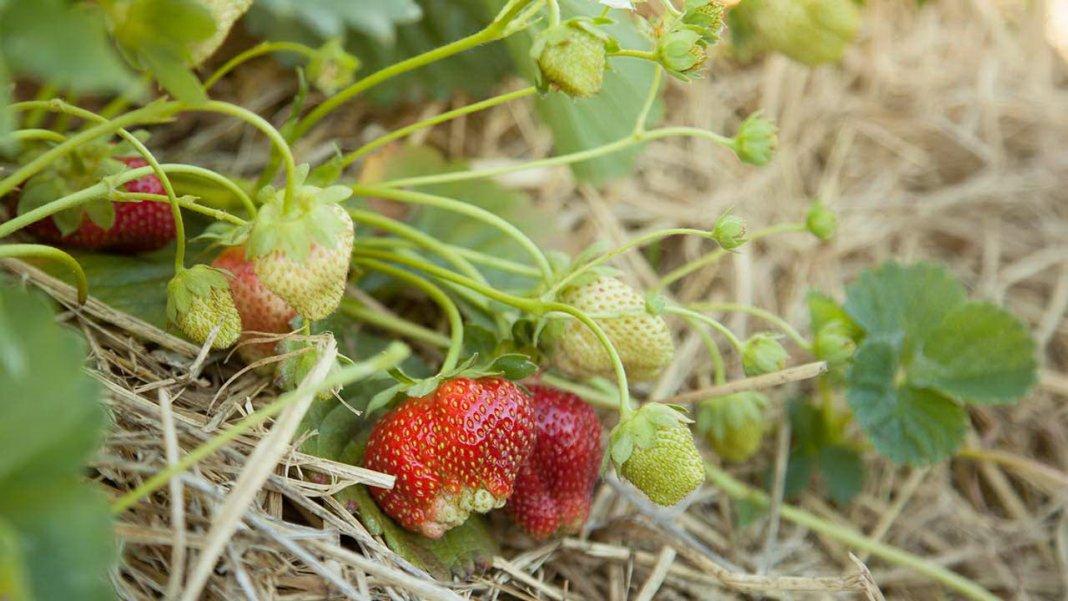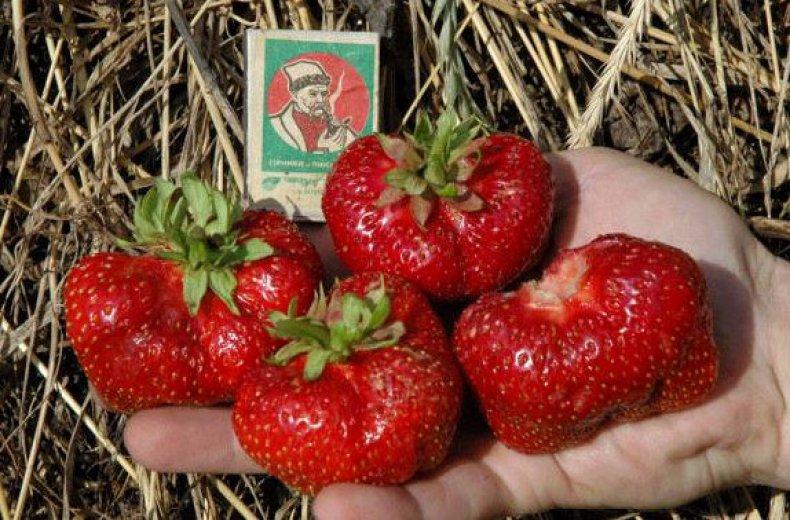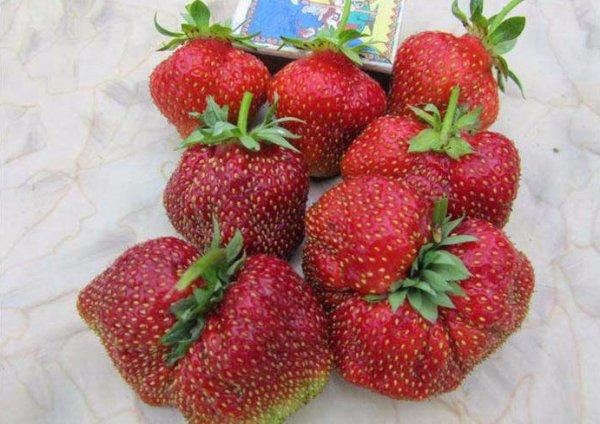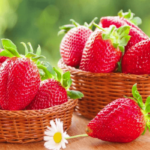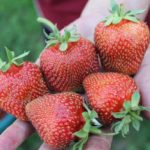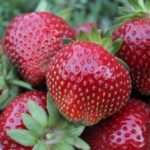Combining the beauty of strawberry beds with a rich harvest of aromatic berries is the goal of a gardener’s work. Choosing a variety of garden strawberries is not so easy - there is too much choice. Long-lived strawberries of the Kiss Nellis variety are an excellent option for lovers of large fruits. Plantings do not need to be renewed for 6-8 years, and the weight of one berry can reach 100 grams!
- Description of the variety
- Plant characteristics
- Pros and cons of large-fruited strawberries Kiss Nellis
- How to plant correctly
- When and where to plant
- Selection of planting material
- Planting process
- How to properly care
- How to water correctly
- Fertilizer application
- Loosening, weeding and mulching strawberries
- Protecting plants from pests and diseases
- Growing garden strawberries
- Harvesting and storing strawberries
Description of the variety
Kiss Nellis is a new large-fruited, productive variety of garden strawberry. Bred in 2014 by German breeders, a descendant of the famous variety Gigantella Maxim. The berry is winter-hardy and does not require additional shelter. Kiss Nellis is ideal for cultivation for commercial purposes; it has increased shelf life and transportability of fresh fruits.
Plant characteristics
Kiss Nellis is classified as a titan variety: durable, with high yields, and has stable immunity to diseases.
Description of the strawberry variety Kiss Nellis:
- Average ripening period.
- Not a remontant variety, bears fruit once a year.
- Large fruits weighing up to 100 g, truncated-conical in shape.
- The color of ripe fruits is dark burgundy.
- Does not require transplants for 6-7 years.
- Creates powerful spreading bushes.
- Productivity up to 1.5 kg per plant.
- The sweetness is moderate, the aroma is pleasant, soft strawberry.
- A variety for universal use.
Strawberries of this variety are not capricious and are suitable for novice gardeners. By following the basic rules of plant care, you can get a truly impressive harvest of giant berries.
Pros and cons of large-fruited strawberries Kiss Nellis
The garden strawberry variety Kiss Nellis has virtually no disadvantages.
Main advantages:
- High yield.
- Good transportability of ripened fruits.
- Durability of plantings, no need to frequently update and change bushes.
- It tolerates spring frosts well and overwinters without shelter.
- Lasting immunity.
- Large fruit.
It seems that German breeders have created the perfect berry. But you can still highlight some minor disadvantages of the variety:
- Plantings can thicken over time; it is necessary to trim the tendrils in time and maintain the distance between bushes when planting seedlings in the ground.
- With insufficient watering or drought, the berries become smaller.
- The soil for plants must be saturated with organic and mineral substances; the variety depends on the quality of the soil.
The giant strawberry Kiss Nelis amazes with its berries. To grow a fruit weighing 100-150 g, gardeners resort to a little trick: they pinch off several flowers on the peduncle, leaving 2-3 ovaries. This will reduce the overall yield from the bush, but you will be able to see and taste a berry the size of a child’s palm.
How to plant correctly
The key to success in growing this variety of strawberries is proper agricultural technology. It is necessary to observe the row of plantings, the depth of the bush and the norms of organic and mineral fertilizers.
When and where to plant
A sunny area protected from gusts of wind is a good place for planting strawberry beds. Loam and sand are the ideal soil combination for Kiss Nellis. But even for this type of soil, it is recommended to apply organic and mineral fertilizers in large quantities.
The best time to plant seedlings is the first ten days of May - the standard seasonal time for planting garden strawberries.
Selection of planting material
In order for the declared benefits of the large-fruited strawberry variety Kiss Nellis to come true, it is necessary to carefully select planting material.
Basic requirements for seedlings:
- Healthy appearance: the leaves are bright, rich in color, there are no spots or damage on the plant.
- Developed root system, with the optimal root length of a strawberry bush being 10 cm.
- The bush should consist of 2-3 fully formed branches.
Kiss Nellis is one of the most ambitious and popular varieties of garden strawberries. Unscrupulous sellers often pass off other plants as it. It is necessary to take this factor into account and buy seedlings from trusted suppliers or grow them from seeds yourself.
Planting process
Planting seedlings should be done in the evening or in cloudy weather. The beds must be prepared. The planting process includes the following steps:
- Plowing the soil to a depth of 30 cm. It is necessary to apply fertilizers: organic additives - manure and humus, mineral fertilizers - superphosphate and wood ash.
- For ease of watering, one bed includes two or three rows of bushes. The optimal distance between the beds is 80 cm. It is recommended to leave a gap of 30-40 cm between the bushes; the variety forms spreading bushes, which, if left unchecked, can create a “jungle” over time.
- You can also apply fertilizer directly into the hole by mixing it with the main soil. The plant is placed in the hole carefully, straightening the roots. The soil is compacted with the palm of your hand, and a nutritious, loose mixture of peat and sand is sprinkled on top.
Important! The growth points of a bush planted in the ground should be above the soil surface. After planting the seedlings in the ground, each bush must be watered. Over the next 2-3 days, protect the plants from scorching sunlight.
How to properly care
The system for caring for strawberry plantings includes: regular watering, application of organic and mineral fertilizers, weeding and loosening the beds, and mulching.
How to water correctly
If there is a lack of moisture in the soil, strawberries begin to shrink, and if there is too much moisture, the plants run the risk of contracting gray fruit rot or other fungal diseases.Kiss Nellis copes with excess moisture on her own. The plant uses excess water to grow succulent stems and leaves. With a lack of liquid, the variety begins to shrink, losing one of its main advantages - large fruit.
Plants should be watered regularly and abundantly, once a week is enough. The water should be warm; drip irrigation can be used. The procedure is carried out in the evening or early in the morning, when there are no scorching rays of the sun that can burn the leaves of plants.
Fertilizer application
Fertilizers for strawberries are applied in three stages:
- Before planting seedlings in the ground.
- As an additional nutrition during flowering and fruiting.
- “Before winter” as an additional aid to plant immunity during the cold period.
The main organic fertilizers include rotted manure, peat, and humus. From mineral fertilizers are required for strawberries azophoska, wood ash and urea. You should not get carried away with the latter option, urea provokes excessive growth of leaves in garden strawberries, which in Kiss Nellis are genetically highly developed, all the energy of the plant is directed to the growth of foliage - there are fewer fruits, their size decreases.
Loosening, weeding and mulching strawberries
Mulching and weeding are preventive measures aimed at controlling weeds in strawberry beds. Their regularity saves moisture in the soil and reduces the amount of watering. Sawdust, straw, and pine needles are used as mulch.
The last component helps fight pests and fungal diseases: the unpleasant odor and fumes of the resin repel insects and disinfect the soil.
Important! A feature of the Kiss Nellis variety is that the bushes are overly thick; it is necessary to pinch off additional shoots, leaves and tendrils in a timely manner.
This stage of care can be conveniently combined with weeding and loosening. It is recommended to leave mulch for the winter; it serves as additional shelter for plants during frost periods.
Protecting plants from pests and diseases
Strawberries of the Kiss Nellis variety have a pronounced immunity, strong and elastic peduncles do not allow the fruits to touch the ground, this feature protects the berries from putrefactive bacteria and fungi. But preventive treatments of plants must be carried out.
You can use pesticides, but if a farmer wants to get an environmentally friendly harvest, then it is better to use folk remedies.
An aqueous solution of iodine and brilliant green is a decades-proven method of combating infectious plant diseases. They are natural antiseptics and do not harm ripe fruits. You can water the strawberries with the solution and spray the leaves at the rate of 10 drops of brilliant green and 5 drops of iodine per 10 liters of water. It is enough to carry out prophylaxis once every 2-3 weeks.
Growing garden strawberries
Kiss Nellis is bred in three ways:
- dividing the bush;
- using a mustache;
- seeds.
The Kiss Nellis mustache is easy to grow: 4-5 shoots are rooted next to the mother bush. As soon as the “babies” develop their own root system, the mustache is cut off. Then the young bushes are transplanted to the main beds.
Dividing the bush is another simple way to propagate strawberries. In the fall, before preparing the strawberry beds for winter, the healthiest and most fruit-bearing bushes with a good root system and average foliage are selected.Such bushes can be divided into 2-3 seedlings and planted on new plantations.
Propagation by seeds is a rather labor-intensive method. A farmer creates strawberry seedlings with his own hands. At the beginning of March, seed material is sown in small boxes; after 10 days, seedlings appear, which at the three-leaf stage are transplanted into individual cups. When the plant gains strength, it is planted in open ground in May. These strawberries begin to bear fruit the next year.
Harvesting and storing strawberries
Kiss Nellis is a successful variety for growing strawberries commercially. The berries have good keeping quality and transportability. It is recommended to store strawberries in wooden boxes or wicker baskets so that the berries are ventilated. It is necessary to avoid exposure to sunlight; the fruits will quickly yield juice. Before transportation, the berries are sorted and rotten and overripe fruits are removed. Strawberries for transportation and storage should not be cleared of sepals and stalks.
Kiss Nellis is a beautiful large-fruited strawberry variety with a pleasant aroma and excellent taste characteristics. Record-breaking berries can surprise even experienced gardeners. The variety is unpretentious and suitable for beginners. By following systematic care, you can achieve abundant harvests already in the first year of growing strawberries.


